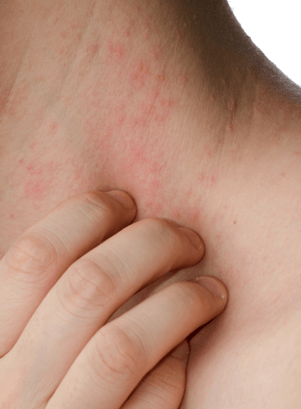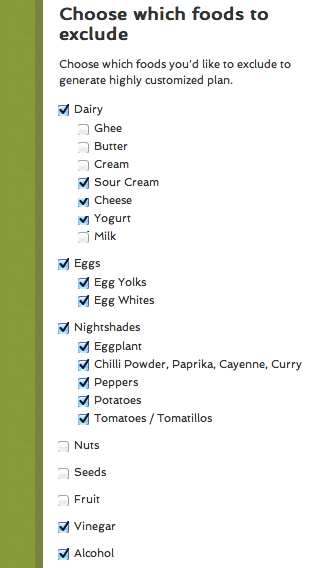Red wine. Aged cheese. Citrus fruits. Sauerkraut. Bacon. These foods are frequently consumed by those on a healthy whole foods diet, and are often found in a variety of Paleo-friendly recipes and meal plans. Even conventional doctors frequently recommend including many of these seemingly unrelated foods daily as part of a healthy diet. After all, even a raw vegan probably wouldn’t argue against eating foods like oranges, spinach, or cinnamon.
It may surprise you to learn that these and other popular foods are capable of causing numerous symptoms in certain people, including migraines, hives, anxiety, acid reflux, and nasal congestion, just to name a few. If you’re experiencing strange reactions to certain foods that most would consider healthy, you may be suffering from a little known but not uncommon cause of food intolerance and disease: histamine intolerance.
Still having strange symptoms on a real food diet? You could be suffering from histamine intolerance.
Never heard of histamine intolerance? You’re not alone. This food intolerance is difficult to diagnose, has a multifaceted symptom profile, and is often confused with a variety of other conditions. Many doctors and nutritionists have never even heard of histamine intolerance, and often treat the symptoms without ever addressing the underlying cause. In my practice, I see it especially with headaches and migraines, skin problems and mental health issues. It’s a fairly common, yet poorly understood, food sensitivity.
Histamine Intolerance: Not your typical food allergy!
Histamine intolerance is generally caused by a defect in the body’s histamine breakdown process, in one of two enzyme systems: histamine N-methyl transferase (HMT) and diamine oxidase (DAO). (1) Deficiency in the DAO enzyme system, found in the intestinal mucosa, has been suggested as the most probable cause of histamine intolerance. (2) There are likely genetic variations in individual enzyme function, but when activity of either of these enzymes is insufficient, the resulting excess of histamine may cause numerous symptoms resembling an allergic reaction. Common symptoms of histamine  intolerance include: (3)
intolerance include: (3)
- Pruritus (itching especially of the skin, eyes, ears, and nose)
- Urticaria (hives) (sometimes diagnosed as “idiopathic urticaria”)
- Tissue swelling (angioedema) especially of facial and oral tissues and sometimes the throat, the latter causing the feeling of “throat tightening”
- Hypotension (drop in blood pressure)
- Tachycardia (increased pulse rate, “heart racing”)
- Symptoms resembling an anxiety or panic attack
- Chest pain
- Nasal congestion, runny nose, seasonal allergies
- Conjunctivitis (irritated, watery, reddened eyes)
- Some types of headaches that differ from those of migraine
- Fatigue, confusion, irritability
- Very occasionally loss of consciousness usually lasting for only one or two seconds
- Digestive upset, especially heartburn, “indigestion”, and reflux
Histamine intolerance is unlike other food allergies or sensitivities in that the response is cumulative, not immediate. Imagine it like a cup of water. When the cup is very full (high amounts of histamine in the diet), even a drop of additional water will cause the cup to overflow (symptoms activated). But when the cup is less full, it would take more water (histamine) to cause a response. This makes histamine intolerance tricky to recognise.
In addition, histamine intolerance is closely related to SIBO and dysbiosis, which suggests that curing the latter may alleviate the former. Many integrative practitioners, including myself, believe that a primary cause of histamine intolerance is an overgrowth of certain types of bacteria that make histamine from undigested food, leading to a buildup of histamine in the gut and overwhelming the body’s ability to catabolize the excess histamine. This causes a heightened sensitivity to histamine-containing foods and an increase in symptoms that are commonly associated with allergies.
For more detailed information on histamine intolerance, including causes, symptoms, and treatment, check out this article by Dr. Janice Joneja, a Ph.D. in medical microbiology and immunology and former head of the Allergy Nutrition Program at the Vancouver Hospital and Health Sciences Centre.
What to do if you have histamine intolerance
Histamine intolerance can be a challenging diagnosis to manage, since many foods contain histamine and for some patients, their gut bacteria is producing the excess histamine that is causing the symptoms. Fermented foods are some of the biggest culprits, since even beneficial bacteria produce histamine during fermentation. In fact, reacting to fermented foods is a classic sign of histamine intolerance, especially if probiotic supplements are well-tolerated. Other foods that are high in histamine include:
- Seafood: shellfish or fin fish, fresh, frozen, smoked or canned
- Eggs
- Processed, cured, smoked and fermented meats such as lunch meat, bacon, sausage, salami, pepperoni
- Leftover meat (After meat is cooked, the histamine levels increase due to microbial action as the meat sits)
- All fermented milk products, including most cheeses
- Yogurt, buttermilk, kefir
- Citrus fruits – eg. oranges, grapefruit, lemons, lime
- Most berries
- Dried fruit
- Fermented foods: sauerkraut, kombucha, pickles, relishes, fermented soy products, etc.
- Spinach
- Tomatoes- including ketchup, tomato sauces
- Artificial food colors and preservatives
- Spices: cinnamon, chili powder, cloves, anise, nutmeg, curry powder, cayenne
- Beverages: Tea (herbal or regular), alcohol
- Chocolate, cocoa
- Vinegar and foods containing vinegar such as pickles, relishes, ketchup, and prepared mustard
For anyone experiencing histamine intolerance, strict adherence to a low-histamine diet is necessary for a period of time. After that, smaller amounts of histamine may be tolerated depending on the person. Individual sensitivity varies tremendously. I have one or two patients that cannot tolerate any amount of histamine in food, and others that are only sensitive to the foods highest in histamine.
In order to improve your tolerance to histamine-containing foods, it is crucial to heal the gut and address any dysbiosis or SIBO issues that may exist. I recommend working with a qualified practitioner who can help you address any bacterial imbalance and create a treatment plan that is tailored to your needs.
What can you eat on a low-histamine Paleo diet?
You may be feeling overwhelmed by the list of foods to avoid – I don’t blame you! It can be especially challenging to eat low-histamine foods on a Paleo diet. There aren’t many resources available for this condition, and everyone reacts in their own unique way to excess histamine and certain high histamine foods. For example, a person may do fine eating berries and citrus fruits, but they may have horrible reactions to wine or sauerkraut. If you’re dealing with histamine intolerance, you will need to determine your own trigger foods, and reduce or eliminate them accordingly.
 For help figuring out what to eat, those with histamine intolerance may want to check out my Paleo Recipe Generator. It contains over 600 Paleo-approved recipes, and allows you to exclude many high histamine foods from your meal plan, including fermented dairy, eggs, tomatoes, eggplant, fruit, certain spices, vinegar, alcohol, and seafood.
For help figuring out what to eat, those with histamine intolerance may want to check out my Paleo Recipe Generator. It contains over 600 Paleo-approved recipes, and allows you to exclude many high histamine foods from your meal plan, including fermented dairy, eggs, tomatoes, eggplant, fruit, certain spices, vinegar, alcohol, and seafood.
Of course, you’ll have to pay attention to whether or not the recipe contains cured meats like bacon or sausage, other spices like cinnamon or cloves, and certain fruits and vegetables like citrus and spinach. Some of these issues can be addressed by excluding fruit and pork from the meal plan, which isn’t necessary but can help make your low-histamine recipe search a little easier. You’ll still need to double check the ingredients of each individual meal, but this search function makes it much easier!
Once you’ve made your selections for foods to exclude, you can plan meals for a full day, a week, or simply find a recipe for a single meal. Even with a histamine intolerance, you can still enjoy many delicious Paleo recipes: Lamb Roast with Fennel and Root Vegetables, Beef Brisket with Mushrooms, Sourdough Buckwheat Pancakes, and even Chicken Pot Pie, just to name a few.
There are few other online resources for low-histamine meal plans, and most are not Paleo compliant. The Low Histamine Chef has a “Low Histamine Diamine Oxidase Boosting Recipe Book” which some people may find helpful, though many of the recipes contain less-than-desirable ingredients such as grains, legumes, and sugar. It’s important to focus on healing the gut and identifying your specific trigger foods in order to reduce symptoms without indefinitely following a strict low histamine diet. Just remember, individual results will vary!
By Chris Kresser
